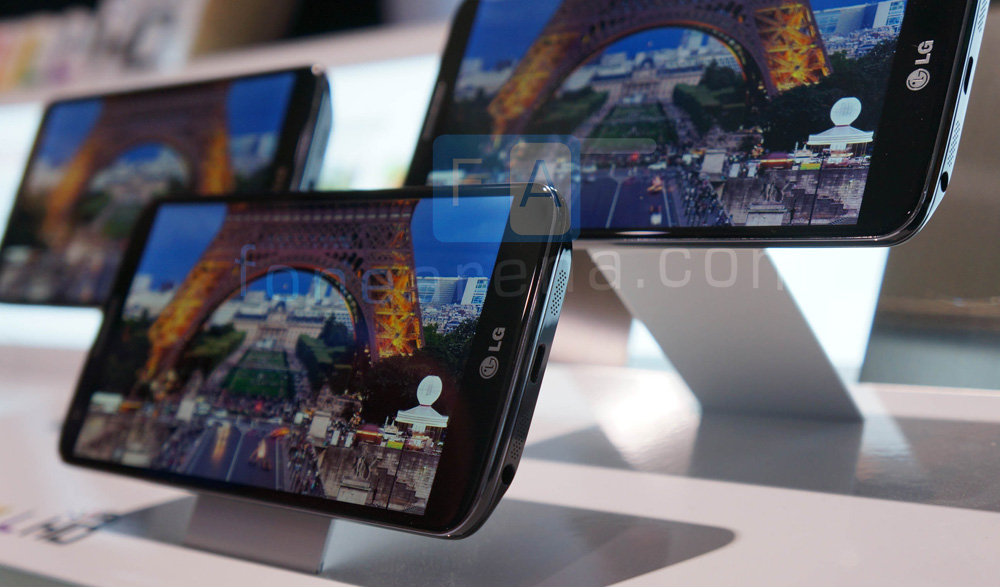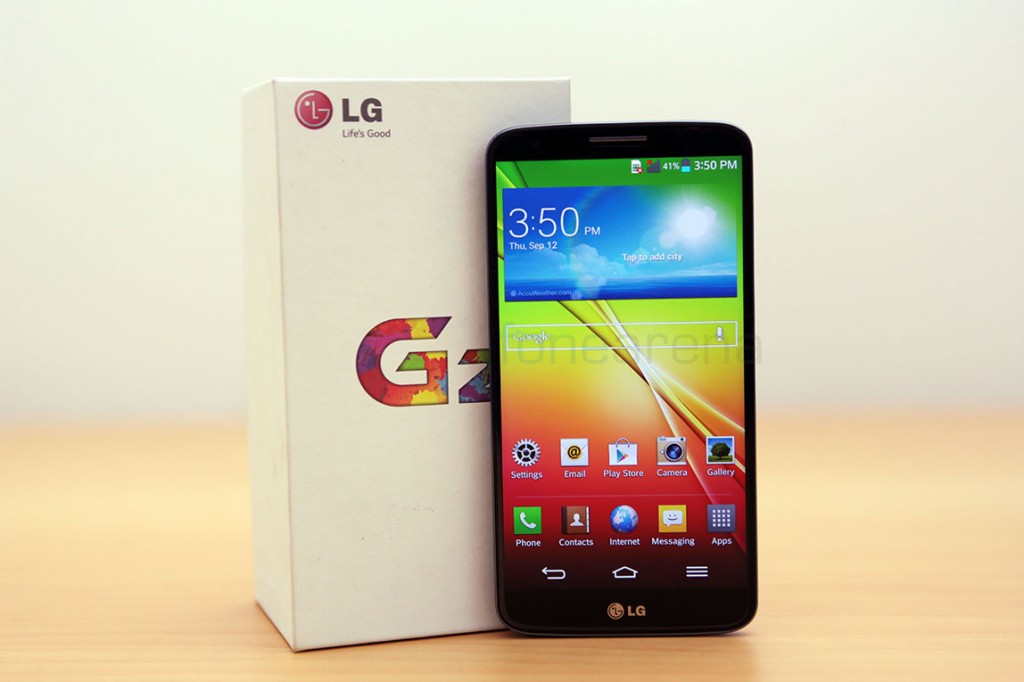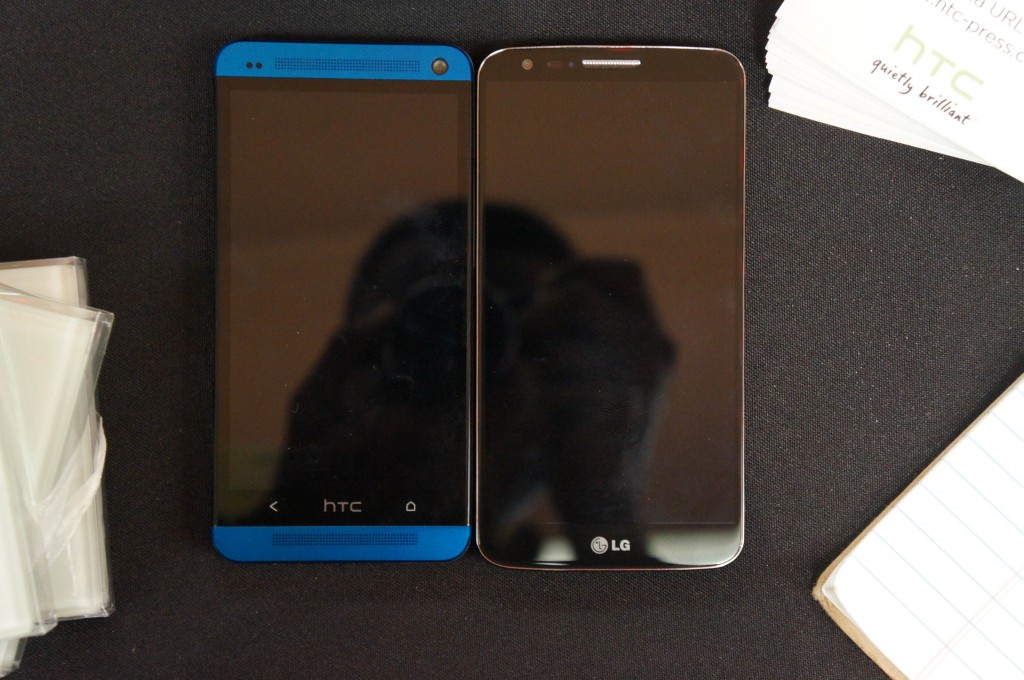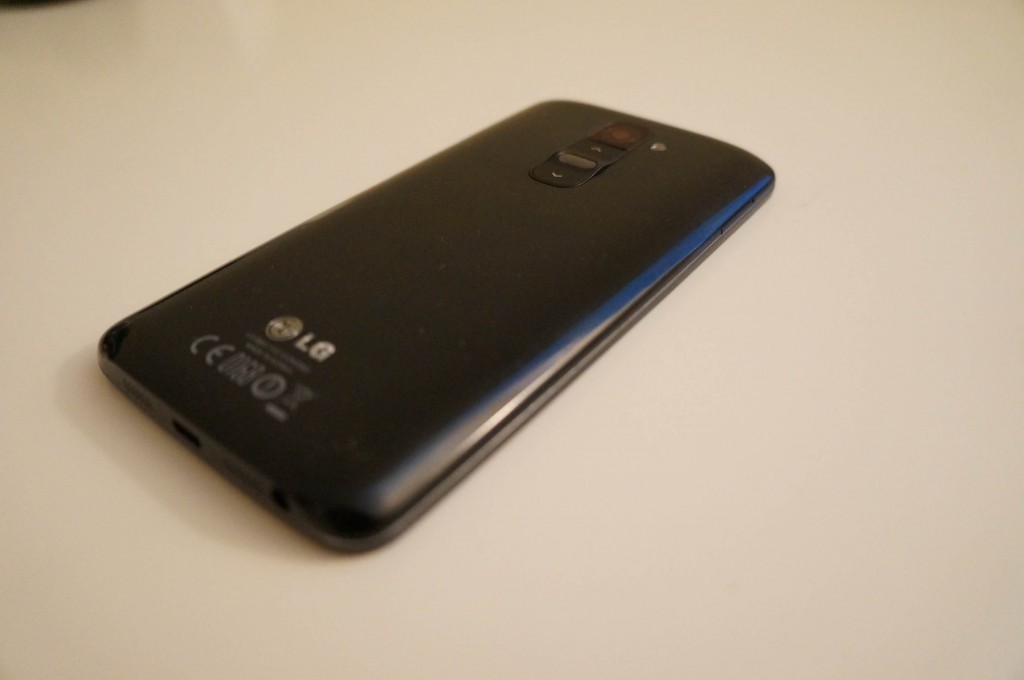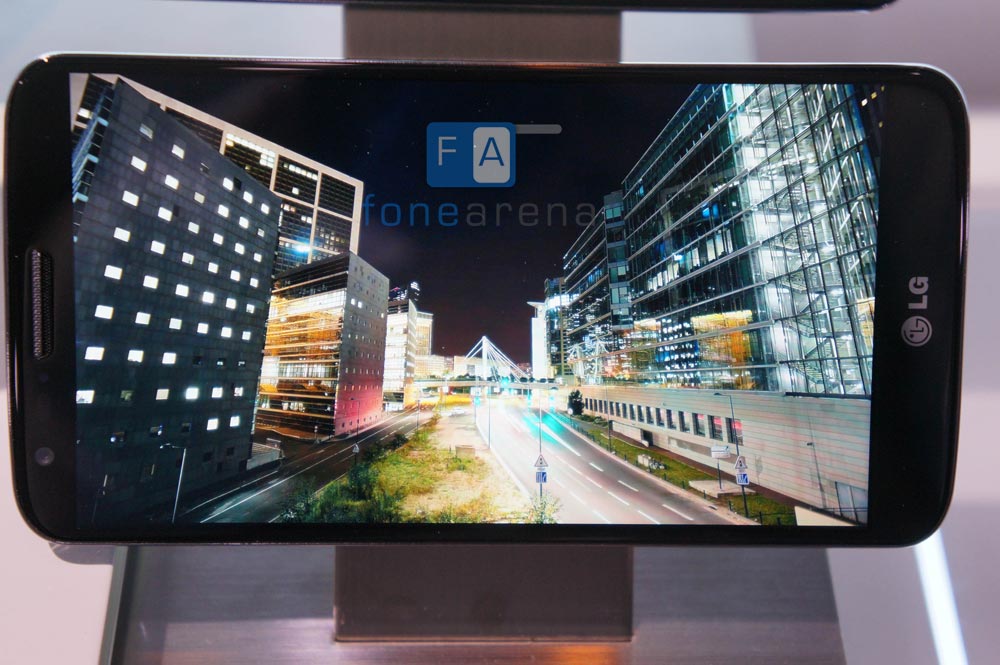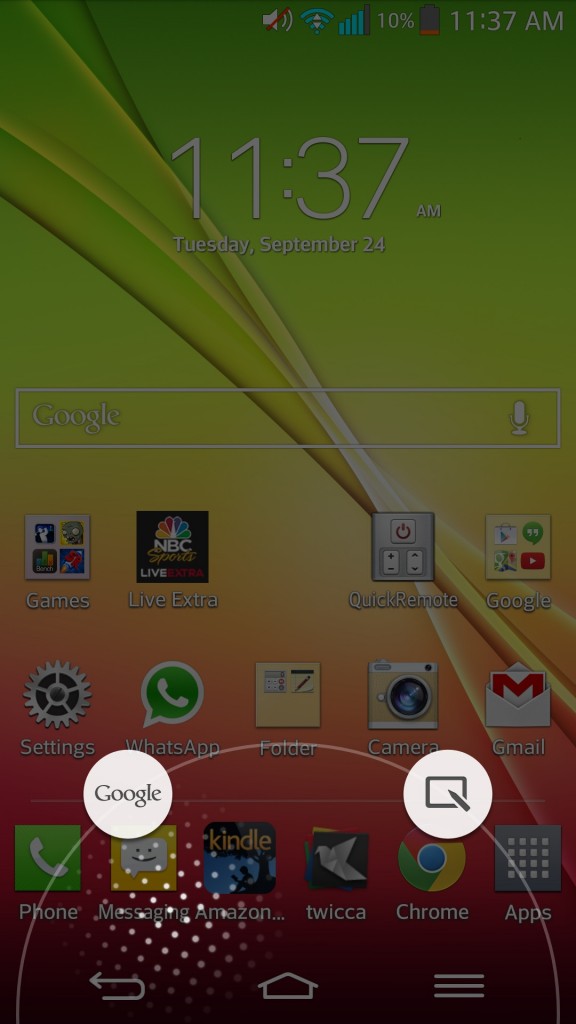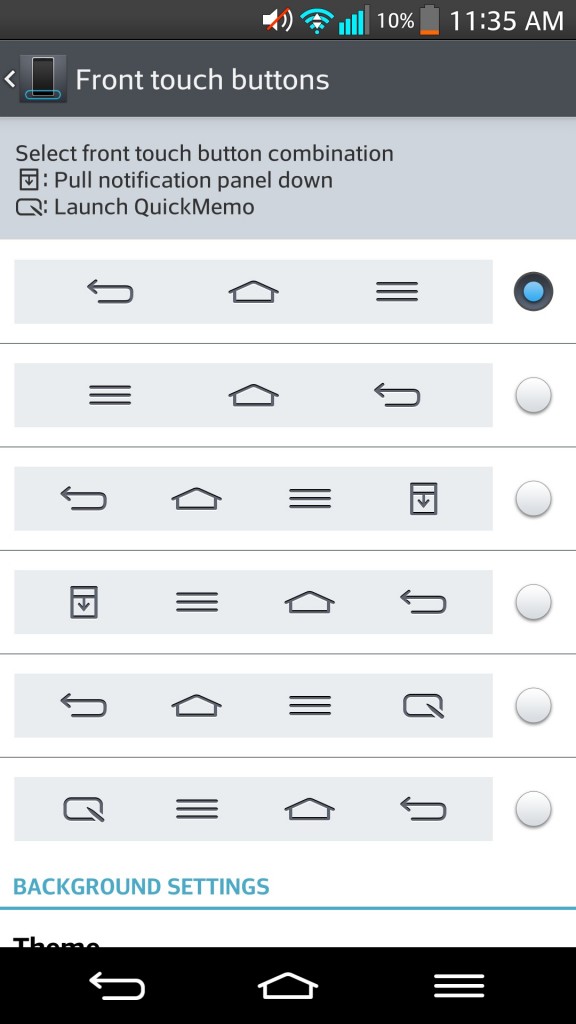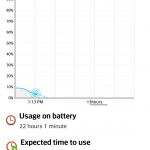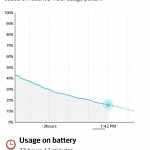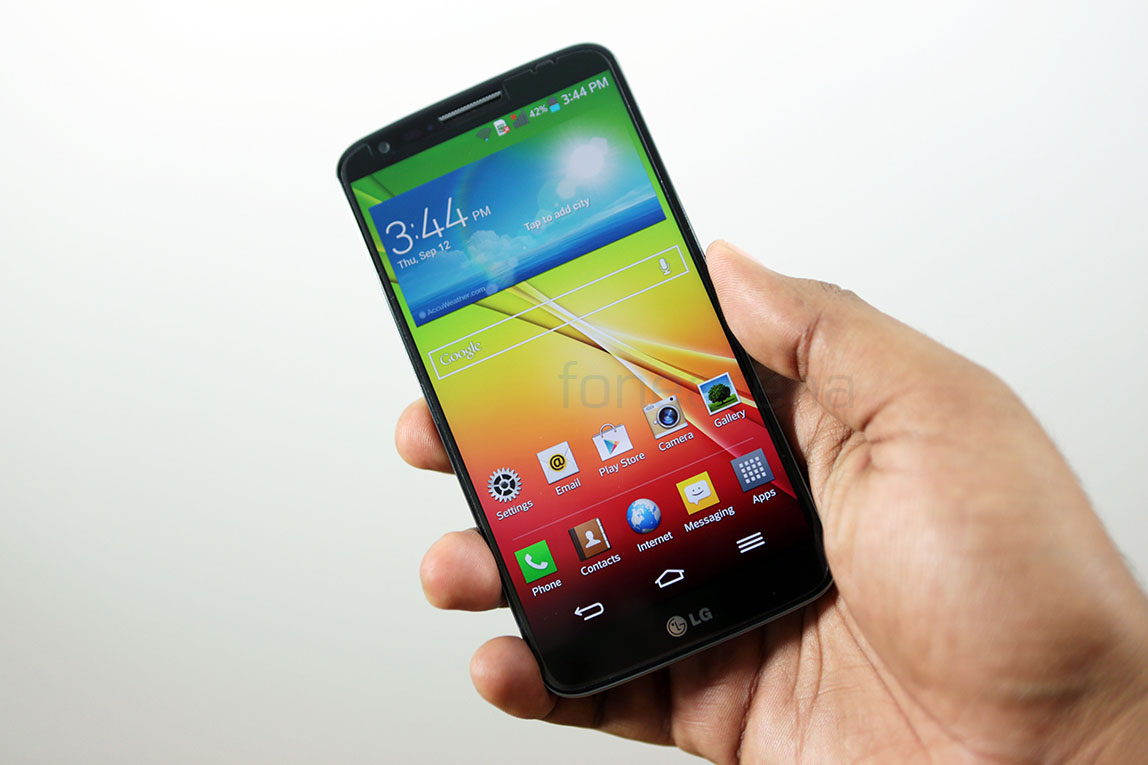
It really is a testament to Moore’s law and the hyper-accelerated development of the mobile space that two year can lead to such immense differences between flagship devices in just 2 years. The Galaxy Nexus, announced in late 2011 was one of the first devices to feature a 720p display at a positively gigantic, (for the time) 4.65 inch display. It ticked every box in the spec sheet at the time, 1GB of RAM, the newest dual-core CPU clocked at 1.2GHz and a competitive GPU for the time courtesy of the OMAP 4460 platform.
Video Review
httpv://www.youtube.com/watch?v=qkZkgZlH-nM
Now, just two years later, LG G2 is in almost every conceivable way twice the device the Galaxy Nexus was in a footprint barely 3mm larger in either width or length. Over twice the pixels in the form of a 5.2 inch 1080p display, twice the CPU cores at almost twice the clock speed courtesy of the Snapdragon 800 processor resting in the belly of this svelte beast. The camera is similarly improved, over twice the megapixels (13 Megapixels), more than twice the video recording capabilities (1080p 60) and almost twice the battery capacity (3000 mAh) to power all of these internals. It really is impressive and astounding how far the mobile market has moved in such a short time.
All in all, on the specifications side of things, the G2 is pretty representative of the top of line in 2013. So how does it stand out in what is already a crowded marketplace. In most cases, OEM’s attempt to differentiate in two major ways, industrial design and software additions,. So let’s took a look at the hardware shall we?
Hardware
On the face of it, the LG G2 is a nondescript black slab device like countless others on the market namely their Korean neighbor’s flagship, but a closer look highlights a few minor differences. Bezels on all sides of the G2 are significantly smaller than we’ve become accustomed to, with the glass comprising the front merging very smoothly with the plastic that comprises the majority of the phone’s body. The plastic itself feels a lot sturdier and better quality than that found on the Galaxy S4 but it doesn’t quite have the same gravitas as Nokia’s polycarbonate designs nor does it feel as robust as Nokia’s recent smartphones.
That is not to say the device is unduly fragile but we would strongly advocate getting as case. The plastic does get extremely slippery in sweaty palms. The G2’s body is shaped much like a stretched bar of gold, thicker in the middle than at the edges with a smooth, curving flow between the two two extremes that fits well in the hand. Though not as rounded as the HTC One, it is a noticeable design choice and helps make what is admittedly a large device feel significantly smaller.
The sides of the G2 are completely devoid of breaks, buttons or the like with one exception, the micro-SIM card slot on the upper left side of the phone. The top is equally bare, featuring only the IR port required to activate and control your home equipment, be it a TV, set-top box, sound system, projector or even air conditioner unit and a microphone hole. The bottom features the Micro-USB port, 3.5mm headphone jack and a pair of loudspeaker grilles.
You’ll note that there has so far been no mention of power and/or volume buttons. These have been moved to the back of the G2 in what LG calls learning from you/us the user. Supposedly a decision made based on the location of fingers while on a call and to improve stability while unlocking and changing volume on your device, these keys now reside directly below the camera lens.
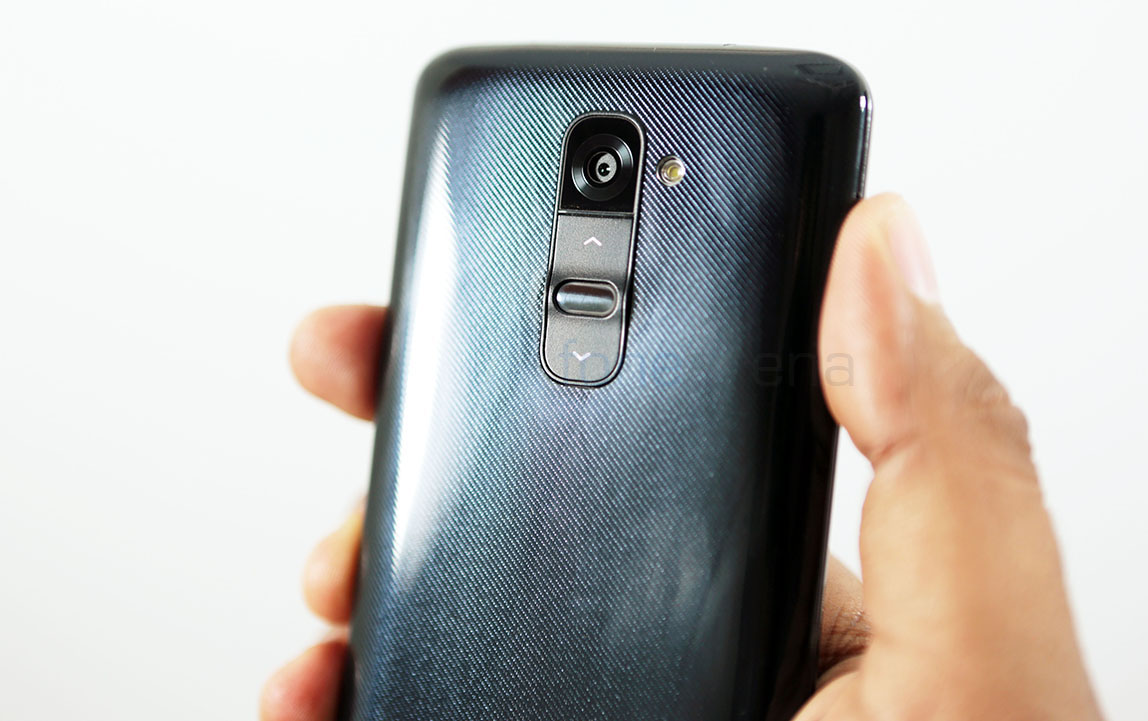
The volume keys flanking the power button which is raised ever so slightly above the rest of the body. Smartly, LG have designed this is such a way that it is borderline difficult and extremely unlikely that any of these 3 buttons will be activated accidentally when the device is laid flat.
The power/unlock button is surprisingly easy to find and activate and there have been no incidents as far as we have experienced where we’ve smudged the camera lens in a fruitless hunt for the right button. The volume keys apart from changing audio volume and ring profiles on the device also pull double duty as shortcuts for launching the camera and quick-memo programs. These only work when the device is locked sadly. I’ve grown accustomed to having a dedicated camera key on tap for those spur of the moment pictures, though the G2 offers an interesting compromise. The quick memo program on the other hand is of little utility and is certainly more suited to a stylus though not entirely unusable with a finger.
The front of the device is dominated by the “edge-to-edge” 5.2 inch 1080p display flanked by incredibly small bezels, a multi-colored LED notification light, the speaker hole, front-facing camera, as well as the ambient light and proximity sensors found on all touchscreen devices these days. As for the display itself, it is impressive, easily outdoing the displays on the Galaxy S4 and HTC One in terms of brightness and colour respectively. It really is one of the best displays on a mobile device, ever. There are no issues with touch response or lost inputs either as one would expect on a flagship device. The only downside to the display is the lack of super-sensitive touch, i.e. the ability to use the display even while wearing gloves. Of course, that’s a personal preference and by no means a standard feature.
Software
Of course brilliant hardware has often-times been hamstrung by mediocre software and it’s imperative that the software, in this case, Android 4.2.2 skinned by LG matches up to the imperious standard set by the hardware so let’s start from the top. Unlocking the device can be done in two ways, double-tapping the display while it is off, something LG calls “Knock-On” or simply pressing and holding one of the 3 hardware keys on the back. LG’s lockscreen allows you to pick a single widget which can be expanded with a downward swipe and a set of 5 shortcuts to applications of the users choosing. Tapping on either a shortcut or the widget and swiping quickly in any direction will unlock the G2 and immediately open that particular application.
From there you’re greeted by the familiar Android homescreen, a dock for 6 of your favorite Android applications and a button for the app drawer. Below these are the software keys used to control the Android interface, “Back”, “Home” and “Action overflow/Menu”. These can be themed in a number of different ways or rearranged completely in one of the many settings menus. Google Now can be activated by sliding a finger from the bottom of the screen towards the upper left-hand quadrant of the display and LG’s own quick memo can be activated using a similar gesture to the right of the display.
The notifications shade is similarly customized by LG with a user-manageable, extensive list of toggles for radios, sensors and the like, brightness controls, system volume controls and or course notifications. The arrangement is such that even with relatively small hands, notifications can easily be dismissed or acted upon, a rather nice bit of foresight by LG. LG also added a feature called slide-aside which is a way of saving apps and their current states for reference later. It is activated by using a 3 finger swiping gesture in an app and allows users to “save” up to 3 applications. Though their intent was good, I’ve yet to experience a single instance where this was more convenient to use than the regular Android multitasking menu.
Of significantly greater utility is the “clip tray” which is a running history of any screenshots or text that has been copied by you the user. These clips are saved automatically and in full resolution and dramatically speed up the sharing of information and as a quick reference when moving from one application to another.
Another software touch that caught the eye was the ability to reply to text messages in a small bubble that pops up over the application that you’re using, allowing you to read the entire message and respond, without having to switch application at all.
LG also included a number of their own applications like Quick Translator, a notebook, LG Backup, voice recorder and a video editor though I did not spend much time using any of these.
Connectivity and Telephony
Like most Snapdragon chipsets in the past few years, the G2 supports 3G, HSPA+ and of course LTE in as many bands as you can count. The version currently in my possession “only” supports HSPA+ as it hasn’t been tuned to fit the US LTE bands but data speeds are just fine for most conceivable circumstances.
The G2 also supports, 802.11n and ac for WiFi, Bluetooth 4.0, Miracast, NFC and GPS and an IR blaster for controlling all your home equipment. The IR blaster doesn’t have the best range or a the widest area of effect, but it works as advertised using the Quick Remote application.
Multimedia
The G2 comes in either 16 or 32GB of memory depending on the market with no ability to extend that through the use of MicroSD slots. This poses a problem for high quality video on the phone as 720p and 1080p video content are known to be incredibly large, even more so at the high framerates that the G2 is able to capture.
Speaking of the camera, the 13Megapixel camera with optical image stabilisation produces still shots that are actually rather good in most conditions, being nothing short of excellent in well-lit conditions and performing admirably in low light conditions when subject movement is kept low. The camera application itself is painfully similar to that on the Galaxy S4, even using some of the same names for the shooting modes. All in all, it’s no Lumia 1020 but it is pretty darn good nonetheless.
Check out some of the camera samples included below.
Video quality was pretty good as well, especially the 1080p60 footage, but given Youtube’s lack of support for 60 frame per second video, it’s hard to gauge without access to the raw footage. Check out the video samples below.
httpv://www.youtube.com/watch?v=s868wUz9QuU
httpv://www.youtube.com/watch?v=SS5shadPy3o
LG made pains during the launch to emphasize the changes that they made to the audio stack in Android to provide a higher audio sample rate and 24bit sound support. Now I hesitate to say that LG’s claims were false, (192KHz 24bit support is useful in a studio setting) but the differences between this audio and the 44.1Khz, 16bit audio in use on practically every device today are negligible and almost impossible to reliably identify. That said, audio quality on the G2 is reliably great and there are no complaints from me on that front.
Video playback, be it streaming 1080p content or local video was not a problem in the slightest, and given the display’s resolution, brightness and color production, it was quite a good experience. As for codec support, the operating system and the Play store should make this a negligible problem at best.
Performance and Benchmarks

As we mentioned earlier, the G2 features Qualcomm’s highest end SOC, the Snapdragon 800. With a maximum clock (2.27GHz) approaching that of the computer I’m typing this review on (2.4GHz), an Adreno 330 GPU and 2GBs of RAM the expectations as far as benchmarking scores are concerned are understandably high. The G2 does not disappoint. The Snapdragon 800 processor offers the best performance we’ve seen so far in a smartphone. Featuring 4 asynchronous Krait 400 cores which is an improvement over the Krait 300 in the Snapdragon 600, the chip has been built on the 28nm process. The Adreno 330 GPU delivers upto 50% improved performance over the Adreno 320 in the Snapdragon 600.
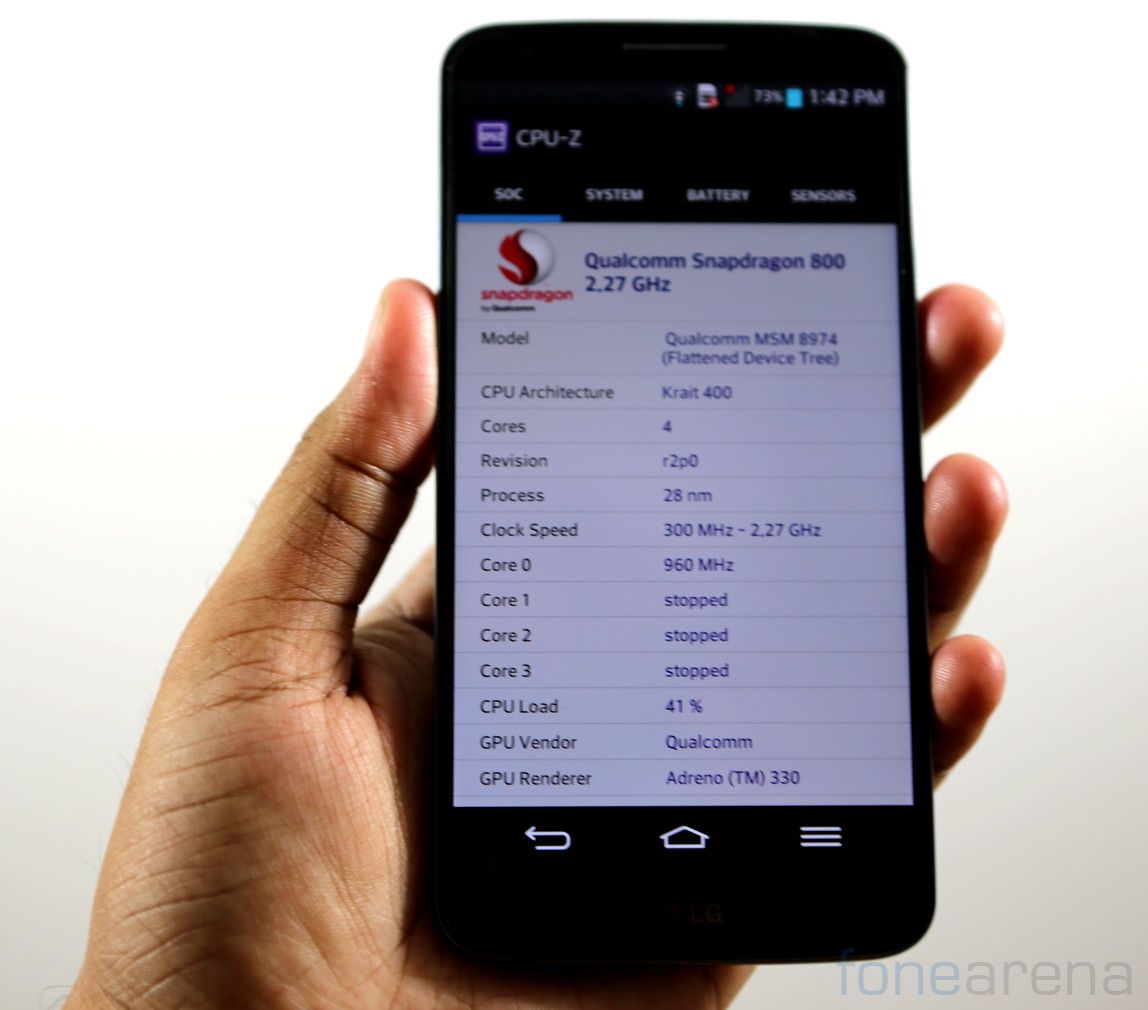
Running the G2 through GLBenchmark and Sunspider should give us a pretty good idea of the G2’s performance in GPU and CPU categories. The results did not disappoint and are included below.
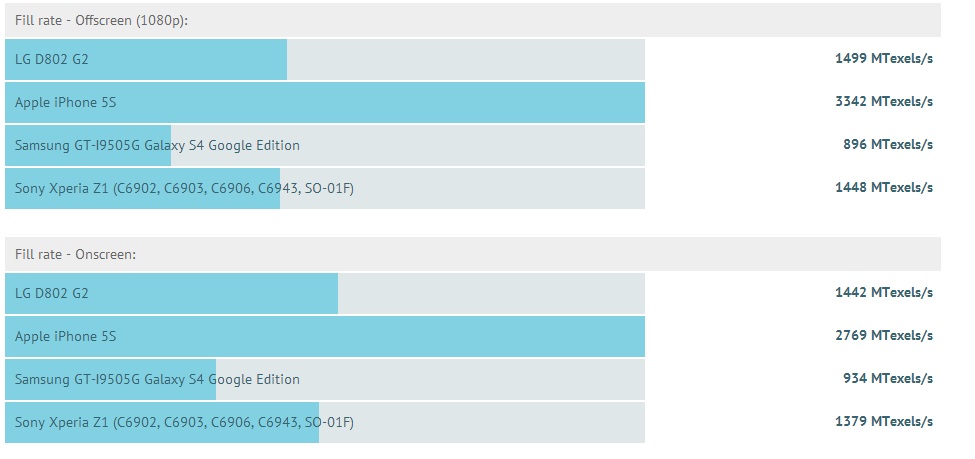
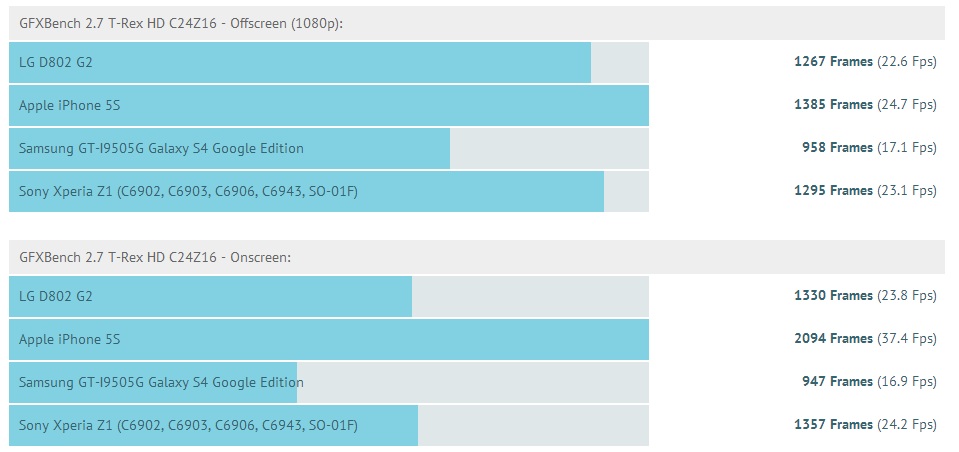
By and large the G2 outperformed the Galaxy S4 and saw similar performance to the Xperia Z1 though all 3 were worse than the brilliant A7 processor in the iPhone 5s though they were competitive in the game-simulating T-Rex benchmark.
The SunSpider result was a disappointing 1020 milliseconds, which when compared to the 416 millisecond times put out by the iPhone 5s indicate a software related reason for failure. Check out the complete set of LG G2 Benchmarks here.
Gaming
We tried several high-end games like Asphalt 7: Heat, Riptide GP2, FIFA 14, NFS Most Wanted and Modern Combat 4: Zero Hour. These games had excellent graphics and details and did not lag. LG G2 is one of the best devices for gaming.
Here is the FIFA 14 gameplay
httpv://www.youtube.com/watch?v=dnW_NW4yneA
Here are the gamplays of Asphalt 7 and Riptide GP2 on the LG G2
httpv://www.youtube.com/watch?v=u3xkHLSSspU
Here is the complete gaming review
httpv://www.youtube.com/watch?v=PLrj0T1jHOc
Battery life
Whenever we hear, large, high-resolution display, cutting edge SOC’s and flagship devices, we expect middling to dismal battery life. Recent devices like the Galaxy S4, Xperia Z Ultra, Droid Maxx and HTC Butterfly S have bucked the trend of more power and thinner devices at the cost of longevity and the G2 is yet another. The 3000mAh coupled with a number of LG-specific silicon tweaks and the frugality of the Snapdragon 800 processor come together to produce absolutely brilliant longevity. Below are a few examples of usage patterns over a number of days while using Wi-Fi, HSPA+ and the display set to ~30% brightness (with automatic adjustment).
Conclusion:
Battery life is easily one of the biggest selling points of the G2. Stuffed with a 3000mAh battery, the G2 is capable of hitting well over 24 hours of continuous and intense use with no problems at all. With 3G data switched off it wouldn’t surprise me to see 48hours worth of use. In my own experiences, the battery has many times lasted for 12+ hours with over 6 hours of screen on time and still showing ~50% battery remaining.
When coupled with the impressive general performance, camera quality and the display, this could very well be the Android flagship you’ve been waiting for. The software has one or two annoyances, and some applications are pretty unnecessary but the holistic package is tough to beat.
It will have to depose the Samsung Galaxy S4 and the Xperia Z1 to fully claim that crown, but the LG G2 is easily one of the best Android devices to be released this year.
Pros
- Brilliant and large 1080p display
- Exceptional battery life
- Great general performance and benchmarks
Cons
- Can be difficult to operate with one hand
- Some useless applications
- Rear-facing buttons can be hard to adjust to

